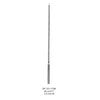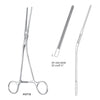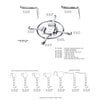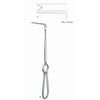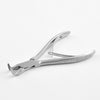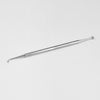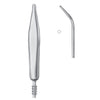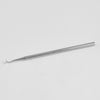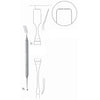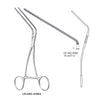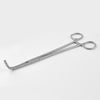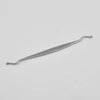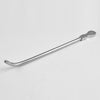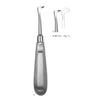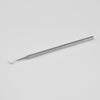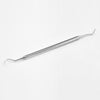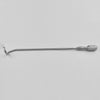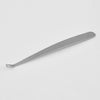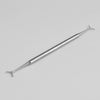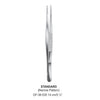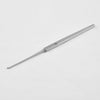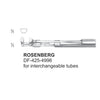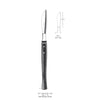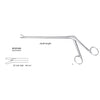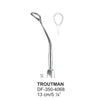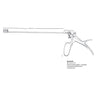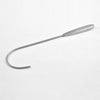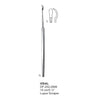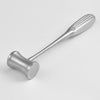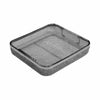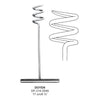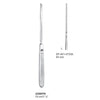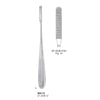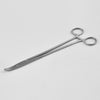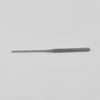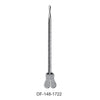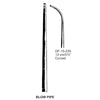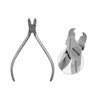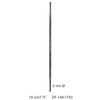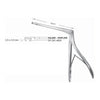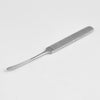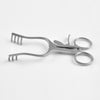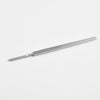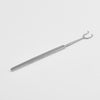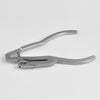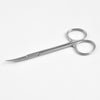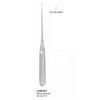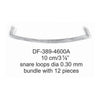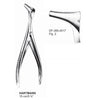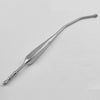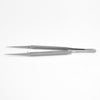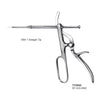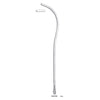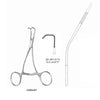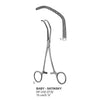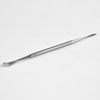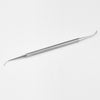How Do You Check the Quality of a Surgical Instrument?

Surgical instruments are critical to the success of surgical procedures. Hospital and surgical center purchasing agents need to be fully informed as they order surgical instruments to ensure patient safety and the reputation of the surgeon and the surgical center.
That doesn't mean the responsibility for choosing quality surgical instruments falls on the purchasing agent alone. Choosing the right brands of surgical instruments is a collective responsibility. Purchasing agents need input from the surgeons who use the instruments and from staff involved in transporting, cleaning, storing, inspecting, sterilizing, and accounting for those instruments. Input from all stakeholders is important for verifying a surgical instrument's quality and choosing the right brands and vendors.
The primary responsibility for checking the quality of each surgical instrument, of course, falls on the purchasing agent.
Know Your Materials
Most surgical instruments are made from stainless steel. They are forged from blanks, which are required to meet two standards, DIN 17442 and DIN EN 10088-3 8/95.There are two types of stainless steel used in surgical instruments:
- Martensitic steel contains up to 1% carbon. It is magnetic. It can be autoclaved.
- Austenitic steel is used for instruments that do not have to be or should not be hardened, such as tweezers and cannulas.
Here are some examples of the uses of different kinds of stainless steel:
- Austenitic Grade 304 S15 is used for instruments that do not have to be hardened, such as holloware.
- Martensitic Grade B-420 S29 is employed in non-cutting instruments like artery forceps.
- Martensitic Grade C or D-420 S45 is used for cutting instruments, such as scissors.
There are also surgical instruments made from titanium for eye procedures and microsurgery.
Know Your Manufacturing Standards
Several international quality standards govern the manufacture of surgical instruments. Here is a partial list:- BS 5194-4:1989. Specifications for instruments with pivot points.
- BS 5194-4:1985. Specifications for shears, scissors, and cutting instruments.
- ISO 13485. Requirements for the management systems used by manufacturers to ensure quality in production and inventory tracking.
- ISO 7153-1:2001 BS 5194-1:1991. The standard for the grades of steel and other materials used to make the surgical instrument.
- Medical Devices Directive 93/42/EEC, Requirements for making surgical instruments traceable.
- CE Mark. A confirmation that the surgical instrument was manufactured and sold in compliance with the Medical Devices Directive. This mark is not a guarantee of quality, just that the instrument is traceable.
Every legitimate surgical tool is also imprinted with the name of the manufacturer and its tracking code.
In tangible terms, what do these engineering standards mean?
Every manufacturer has a precise process for creating surgical instruments from their raw materials.
The manufacture of surgical instruments begins with machining. Metal cutters mill stainless steel and titanium blanks to make serrations, teeth, racks, and box joints. Machining ensures that the instrument will provide the precision that the surgeon expects.
Next, the parts machined from blanks are fitted and assembled. Technicians use a series of lathes and grindstones to fashion the instrument to the precise size, weight, and dimensions surgeons require.
Surgical instruments then undergo annealing to soften them so they can be finished more precisely. After that, they are rehardened through a vacuum process.
Finally, surgical instruments are finished, polished, inspected, and marked for traceability. Then it is your turn to inspect for quality.
Inspecting Surgical Instruments for Quality Once You Receive Them
Although most American and German surgical instrument makers are sticklers for quality, you still need to visually inspect all the surgical tools your department receives before you release them for use. You also need to examine them periodically when they are reused.Here are some common features of surgical instruments and what to look for:
- The two sides of any surgical instrument with a box joint should be symmetrical.
- Serrations on the jaws of surgical scissors should be shaped identically so they mesh exactly.
- Prongs and teeth should be sharp. They must mesh exactly when the jaws close.
- When pressure on scissors or prongs is released, the serrations or teeth must not catch each other.
- Needleholder jaws must not slip.
- There must not be any unnecessary gaps in serrations or teeth.
- Rivets need to be countersunk so they do not move.
- A rectangular section should be around a joint to give it maximum strength.
- Ratchets must not come disengaged during use.
- Any ratchet should be the same thickness as the shank.
There are different features of concern for different surgical instruments.
- Examine the finish on polished or satin finish stainless steel.
- Examine serrations on artery forceps.
- Examine tungsten carbide clips on needle holders.
- Examine the bow of artery forceps, needle holders, and scissors.
- Examine atraumatic teeth on Debakey clamps and forceps, as well as Derra and Cooley vascular clamps.
- Examine the teeth on Allis, Lanes, and Littlewood tissue forceps.
- Examine the rack on Mayo-Hegar needle holders and Spencer Wells artery forceps.
- Examine the blades on dressing scissors as well as Mayo and Metzenbaum scissors.
- Examine the screw point on Mayo, Metzenbaum, McIndoe, and Stevens scissors.
- Examine the box joint on Crile, Halstead, and Spencer-Wells scissors.
- Examine the lumen of suction tools.
Who should be doing these inspections? Ideally, the purchasing agent recruits surgical room staff to double-check the quality of surgical instruments before adding them to inventory. The worst possible time to discover a manufacturing fault in a surgical instrument is while it is in use during an operation.
Most Importantly, Procure Surgical Instruments from Ethical Suppliers
Let surgicalinstrument.com be part of your quality assurance team. We are a reseller of surgical instruments manufactured to ISO, ASTM, FDA, CE, DIN, and IEC standards—and when your surgeons need custom-made surgical instruments manufactured to the same high standards, we can tool them in-house.Because of our vast volume of surgical instruments, we offer the highest-quality tools at extremely competitive prices delivered worldwide. Contact us for more information.



